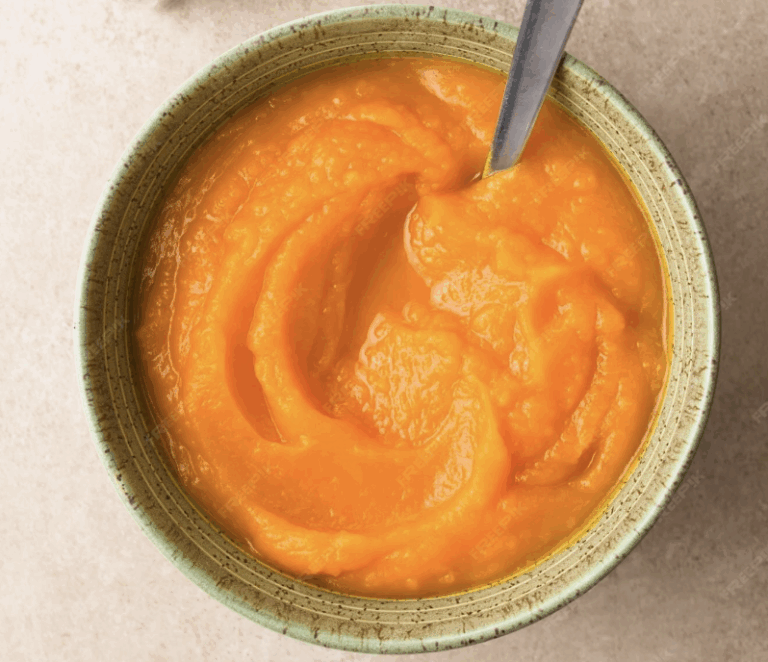How To Begin Companion Planting Your Garden
Have you ever heard the buzz word “companion planting” and wanted to know what it means? Have you also wondered why you would want to incorporate it into your garden? Let’s talk about what it is and how you can begin companion planting for a more successful garden.

What is Companion Planting?
Companion planting is such a broad term, so don’t get discouraged by the amount of information out there! In simple terms, companion planting is planting two different plants together to form a beneficial relationship between them. A quick search will give you lists and lists of what plants work well planted together. While those can be useful, they can also be overwhelming.
Some information will have you thinking only certain plants can be planted together. In my experience, that is not at all true. When you begin to companion plant, don’t worry about the lists that say plant this with that. Instead, there’s a few things to consider that will help you make your own decision on what will work best. These considerations will also help you decide which of your plants will work well planted together.
How Companion Planting Can Help Your Garden
If there’s one thing you can gather from the overwhelming amount of information on companion gardening, it’s that it can help your garden. But how does companion gardening help improve your garden? This is not an exhaustive list, but these are ways companion planting has helped me. Using it, I’ve not only helped my plants thrive but also grown more than I ever thought possible in the same amount of space.
Using Garden Space More Efficiently
If you are more of a traditional gardener, you might plant your crops in rows. Each plant in a row is spaced a minimum distance apart, with rows farther apart. This mimics large scale, traditional farming and big agriculture. Other methods of gardening have been developed, now, that are more efficient in using garden space.
One of the popular space saver methods of gardening is the square foot garden idea developed by Mel Bartholomew. I’m a big fan of this planting method. It’s not perfect, however. It does allow you to plant more in a smaller space, but it does not take companion planting into account.
Companion planting can benefit both traditional gardening methods as well as newer methods like square foot gardening. It’s important to learn how to utilize what space you have efficiently, regardless of how big or small it is.
Encourage Pollinators to Visit
Most of the vegetables we plant in our gardens require some kind of pollination. There are exceptions, such as most root crops and members of the brassica family (broccoli, cauliflower, cabbage, etc.). Tomatoes can get by without pollination if they’re exposed to wind or anything that can shake the plant. Corn is entirely wind pollinated. But everything else requires pollination by a pollinator.
The most famous pollinator is the bee. We’ve all heard the phrase “Save the Bees” and for good reason, they are the most efficient pollinators. However, they are not the only ones that can pollinate your plants. Some species of wasps, beetles, flies, hummingbirds, and even bats can also pollinate plants.

Companion planting is an excellent way of attracting these pollinators to your garden. Planting flowering plants in close proximity to each other gives pollinators a reason to visit that area. If the plants cover a wider area, the pollinator may choose to skip them and visit a place with easier access to food instead.
Planting flowers, especially, is a great way to attract a variety of pollinators to the garden. Flowers often attract beneficial insects, such as pollinators, to the garden and help your vegetables thrive. Some flowers can also do double duty by keeping some of the destructive insects away.

Invite Good Insects While Discouraging Pests
We’re all familiar with the most desirable insect in your garden, the bee, and we’ve talked about other pollinators in the section above. But there are other beneficial insects that are good to have around.
Insects such as ladybugs, some wasps, and other predator type insects are ones we like to see in the garden. These insects aren’t going to be pollinating your plants, but they will be on the lookout for other insects that are there to eat your plants.

In my area, and many others, aphids are a big problem. Aphids love to attack tomatoes, leafy greens, dill, and many other plants. Ladybugs love aphids, so planting things that ladybugs like can help bring them in to deter and eliminate any aphids. Chives, dill, cilantro, marigolds, and calendula are just a few plants that tend to bring in ladybugs. Dill is liked by both, and I’ve experienced it getting attacked by aphids and bringing in the ladybugs to eat them.
Planting certain plants with others can also ward off pests. Planting lots of marigolds around cabbage and other brassicas may help deter cabbage moths. Flowers and alliums, members of the onion/garlic family, tend to be really good at deterring unwanted visitors. If you’re battling larger pests, like deer, planting deer resistant plants along the edges of your garden may help steer them in another direction. 8 foot high fences help with that, too, but those can be expensive to build.
Bunnies are a popular garden pest. Planting strong smelling plants throughout, such as lavender, marigolds, and onions/garlic may help push them off to munch somewhere else.
Creating Support and the Ideal Environments
What does this mean? It means using companion planting to pair plants together that can give the other plant what it may need. The idea of the “3 sisters” planting is very popular and derives from Native Americans. 3 sisters planting puts corn, beans, and squash together as the perfect trifecta of companion planting. The corn grows tall and can act as a trellis for the beans to climb. The squash can grow and cover the ground around the beans and corn. Each provides a benefit to the other.
Some plants can also help support other plants by creating the ideal environment for that other plant. Using cucumbers, for example. Cucumbers are a vining plant and if you trellis them, you can create a microclimate underneath the trellis. This area won’t have as much sun, and as a result will end up cooler than the surrounding areas. This could be the ideal place to put lettuce, spinach, or other leafy greens that like cooler temperatures. You could potentially increase the season for these vegetables just by using the cucumbers as a sun shade through the summer.
That could work with any vining plant, cucumber is just an example, and it could also work with other colder season crops like carrots, beets, and other root crops.
Flavor Enhancer
This is controversial and I debated leaving it out. But there are people that swear by it so I thought it might be worth a mention. Some gardeners say that planting certain plants, like basil and tomatoes, together enhances their flavor. I have not experienced that, but I also haven’t tried planting for it. I plan on planting basil and tomatoes together this year. I’ll update this post if I feel the basil boosted the flavor of the tomatoes.
What NOT To Do When Companion Planting
There are many things on the “to do” list when companion planting, but there are also a few things to avoid.
Spread of Disease and Pests
Some plants are prone to the same diseases. For example members of the nightshade family such as tomatoes, eggplant, and potatoes are all prone to blight. If you plant these plants together, you may be increasing the risk of your plants catching blight and then easily passing it on to the other plants.
Same thing with powdery mildew. I’ve found squash is particularly susceptible to this disease so spacing out your summer/winter squash as well as cucumbers may help prevent it from spreading.
Plants plagued by the same pests should not be planted together. Planting cabbage, broccoli, and cauliflower together will give the cabbage moth an abundance of choice on where to lay eggs. Spreading these plants out is also a way to confuse the moth and prevent damage by the cabbage worm. Picking something else to companion plant with a group of cabbage, such as marigolds, could save your crop.

Pairing Plants With Similar Needs
When choosing which plants to plant next to each other, you should consider each plant’s individual feeding, watering, and space needs.
Nutrients
Some plants are heavy feeders while others need a lot less nutrients to grow. For example, tomatoes and squash are heavy feeders and require a lot of nitrogen to grow. Pairing them together, or with another heavy feeding plant such as okra or melons, will put them in direct competition for nutrients in the soil.
Instead, consider pairing heavy feeders with lighter feeders, such as many root crops and leafy greens. These plants don’t require as high of a nutrient load so there will be less competition between the plants. That means happier plants that are more likely to thrive next to each other.
Water
Water is essential for all plants to survive, but some need more than others. When you begin companion planting, consider each plant’s water needs.
Many warm season vegetables such as tomatoes, squash, and beans tend to do well without a lot of water once the plants are established. This is because they’re roots grow deeper into the soil looking for water. There are some exceptions like corn. Corn is shallow rooted; it needs a lot of water because the roots will not go looking for it deep in the soil.
Cooler season crops, like broccoli, cauliflower, cabbage, and turnips also tend to require a lot more water to thrive.
Pairing a vegetable that requires a lot of water with one that does not can cause the one that does not to develop disease, pest problems, and cause overall decline of the plant. Too much water for some plants can even hinder its ability to take up nutrients from the soil. Tomatoes, for example, have a hard time taking up calcium when they’re over-watered. This leads to a condition known as blossom end rot.
Space
Competing for space goes hand in hand with competing for nutrients. Plants need to be able to spread their roots and collect the nutrients from the soil they need to thrive and produce fruit.

Planting too close together can also affect how much sunlight each plant gets and the amount of airflow through the plants. Per the example above, pairing a vining plant like cucumbers with a smaller plant that needs less shade and cooler weather like lettuce can work perfectly. If you pair it with a sun- and heat-loving plant like peppers, you’ll stunt the pepper plant, and it probably won’t produce well—if it produces at all.
Make sure when you choose which plants you are planting together that each of them will receive the amount of sunlight it needs to thrive.
Airflow between plants and branches of a single plant is essential to reduce the risk of fungal diseases. If air can’t get through, the leaves of the plants tend to hold moisture on the surface. This moisture encourages fungal growth, which could kill the entire plant. It may also invite other diseases to take hold, or pests to move in, as the plant health deteriorates.






